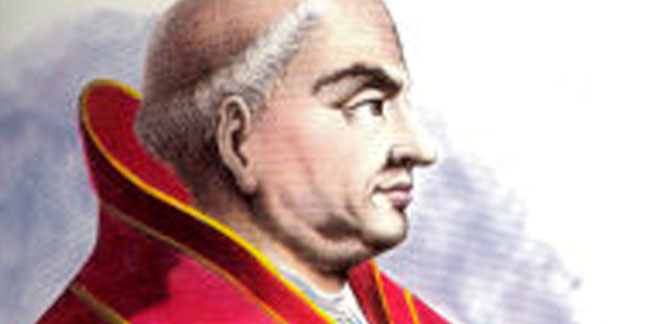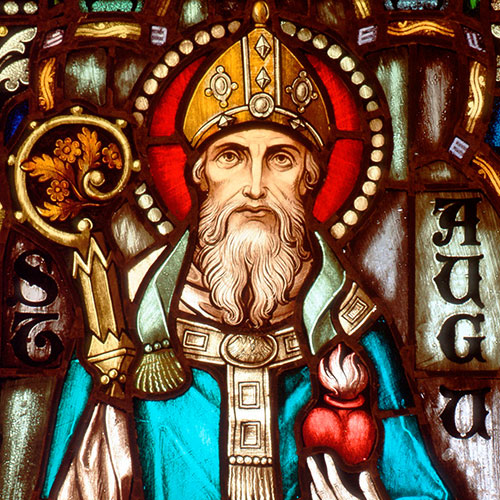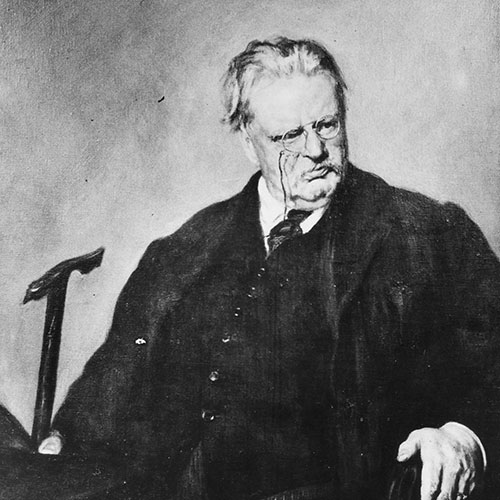As Catholic converts around the world enter the Catholic Church during the Easter Vigil, here's a look at well-known converts who have had a significant impact on the Catholic church.
 St. Augustine of Hippo
St. Augustine of Hippo
The doctor of the church was the son of a pagan father and Christian mother, St. Monica. Augustine was drawn into the heretical Manichean sect as a young man, and it took him years to free himself of the heresy. Much to St. Monica's relief, Augustine fell under the influence of St. Ambrose, who was the bishop of Milan. In Milan, he was baptized. Eventually, Augustine became bishop of Hippo, a city in northern Africa. Among his many writings are "Confessions" and "City of God."
St. John Henry Newman
A former Anglican priest who led the Oxford movement in the 1830s to draw Anglicans to their Catholic roots, Cardinal Newman became Catholic in 1845, when he was 44 years old. The cardinal founded the English community of the Oratory of St. Philip Neri. "Apologia Pro Vita Sua" and "Grammar of Assent" are among the theologian's best-known works.
 St. Elizabeth Ann Seton
St. Elizabeth Ann Seton
The first native-born saint of the United States, Mother Seton was a young widow with five children when she joined the Church, over the objections of her Protestant family. In 1808, she arrived in Baltimore and founded the Sisters of Charity one year later. Later, she and her community would settle in Emmitsburg, Maryland, where she founded St. Joseph's Academy and Free School. She was canonized in 1975.
St. Paul
Saul was a zealous persecutor of Christians until his encounter with Christ on the road to Damascus (see Acts 9:9-19; 22:3-21; 26:4-23). From that point on, he became a fervent apostle, taking the name Paul and embarking on three great missionary journeys to spread the Good News and authoring at least 13 of the New Testament epistles. So great has Paul's influence been on Christianity that Pope Benedict XVI declared a Year of St. Paul in 2008. That year, the pontiff said this about the apostle's conversion: "St. Paul was not transformed by a thought but by an event, by the irresistible presence of the Risen One whom subsequently he would never be able to doubt, so powerful had been the evidence of the event, of this encounter."
 G.K. Chesterton
G.K. Chesterton
Chesterton was a noted thinker and prolific author of influential works such as "The Man Who Was Thursday," "Orthodoxy" and "The Everlasting Man," which C.S. Lewis credited for his conversion from atheism to Christianity. A convert from Anglicanism, Chesterton wrote about his understanding of the Catholic Church and how it won him over in "The Catholic Church and Conversion."
 Cardinal Francis Arinze
Cardinal Francis Arinze
The Nigerian-born, 91-year-old prelate, who headed up the Congregation for Divine Worship and the Discipline of the Sacraments for six years until his retirement in 2008, is a convert from traditional African religion who joined the Catholic Church when he was 9. Several years later, his mother and father joined him in the faith. Pope St. John Paul II made him a cardinal in 1985.
 Pope St. Martin I died a martyr for defending the faith against the influences of imperial power and a popular heresy of the time.
Pope St. Martin I died a martyr for defending the faith against the influences of imperial power and a popular heresy of the time.
He was born in the Italian town of Todi and served as nuncio to Pope Theodore I in Constantinople. He was named successor to Theodore on July 5, 649 – without getting prior approval from the Roman emperor Constans II. This independent act so enraged the emperor that he refused to acknowledge Martin as the legitimate pope.
The emperor was further angered when Martin convened a synod at Lateran to combat the Eastern heresy of Monothelitism, which held that Jesus did not have a human will, only a divine will. Constans did not support Monothelitism per se, but he ordered that no one could discuss Jesus' will at all. The Lateran council affirmed that Jesus had two natures and two wills, human and divine. The council of 105 bishops also condemned the emperor's command to avoid discussion on the topic.
In the summer of 653, Constans ordered Martin to be kidnapped, arrested and brought to trial in Constantinople. The emperor's guards boldly entered the Lateran, arresting the bedridden Martin and tossing him on a ship for the three-month voyage to trial in Constantinople. When he arrived in Constantinople, Martin was sickly – racked with dysentery and disabled by gout. He was thrown into solitary confinement in a freezing and filthy cell.
On Dec. 19, 653, Martin was brought to trial on trumped-up charges of treason and sacrilege. The pope, near death and realizing his position futile, only laughed at the ridiculous accusations and begged the emperor to excuse the fumbling witnesses before they added perjury to false witness.
Constans pronounced a predetermined verdict of guilty on the pontiff and sentenced him to public flogging and execution. After the sentence was read, Martin was taken to a terrace of the palace near the imperial stables where crowds had gathered.
The puppet judge who had presided at the tribunal mocked Martin, saying, "You see how God delivered you into our hands. You were against the emperor, and thus has God abandoned you."
Then the soldiers slashed his clothing and took away his shoes. He was delivered to the prefect of the city with the order of execution. The judge tried to incite the populace to anathematize Martin, but the mob remained silently gazing at the ground. After a while, the crowd dispersed.
The soldiers stripped the pope of his shredded clothes and dressed him in a grotesque tunic, open on both sides, to humiliate him. They put an iron ring around his neck, with a rope attached to it, and dragged him back to prison. In the freezing cold, Martin trembled and awaited death.
It was only by the dying Patriarch Paul's intercession that Martin's sentence of public execution was commuted to banishment. He was exiled to Crimea, where he died Sept. 16, 655, suffering from cold and starvation.
Today Martin is venerated as a saint by both the Catholic and Orthodox Churches.
— Sources: "The Popes: A Papal History," by J.V. Bartlett, and www.catholicnewsagency.com


 St. Augustine of Hippo
St. Augustine of Hippo St. Elizabeth Ann Seton
St. Elizabeth Ann Seton G.K. Chesterton
G.K. Chesterton Cardinal Francis Arinze
Cardinal Francis Arinze